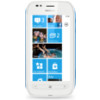Nokia Lumia 710 User Guide - Page 75
Additional safety information, Make an emergency call, Small children, Medical devices - how to unlock a
 |
View all Nokia Lumia 710 manuals
Add to My Manuals
Save this manual to your list of manuals |
Page 75 highlights
Product and safety information 75 Additional safety information Make an emergency call 1 Make sure the phone is switched on. 2 Check for adequate signal strength. You may also need to do the following: • Insert a SIM card. • Deactivate call restrictions you have activated for your phone, such as call restriction, fixed dialing, or closed user group. • Make sure airplane mode is not switched on. • If the phone screen and keys are locked, unlock them. 3 Press . 4 Select . 5 Select . 6 Enter the official emergency number for your present location. Emergency call numbers vary by location. 7 Select call. 8 Give the necessary information as accurately as possible. Do not end the call until given permission to do so. Important: Activate both cellular and internet calls, if your phone supports internet calls. The phone may attempt to make emergency calls both through cellular networks and through your internet call service provider. Connections in all conditions cannot be guaranteed. Never rely solely on any wireless phone for essential communications like medical emergencies. Small children Your device and its accessories are not toys. They may contain small parts. Keep them out of the reach of small children. Medical devices Operation of radio transmitting equipment, including wireless phones, may interfere with the function of inadequately protected medical devices. Consult a physician or the manufacturer of the medical device to determine whether they are adequately shielded from external radio frequency energy. Implanted medical devices Manufacturers of medical devices recommend a minimum separation of 15.3 centimeters (6 inches) between a wireless device and an implanted medical device, such as a pacemaker or implanted cardioverter defibrillator, to avoid potential interference with the medical device. Persons who have such devices should: • Always keep the wireless device more than 15.3 centimeters (6 inches) from the medical device. • Not carry the wireless device in a breast pocket. • Hold the wireless device to the ear opposite the medical device. • Turn the wireless device off if there is any reason to suspect that interference is taking place. • Follow the manufacturer directions for the implanted medical device. If you have any questions about using your wireless device with an implanted medical device, consult your health care provider. Accessibility solutions Nokia is committed to making mobile phones easy to use for all individuals, including those with disabilities. For more information, visit the Nokia website at www.nokiaaccessibility.com.















